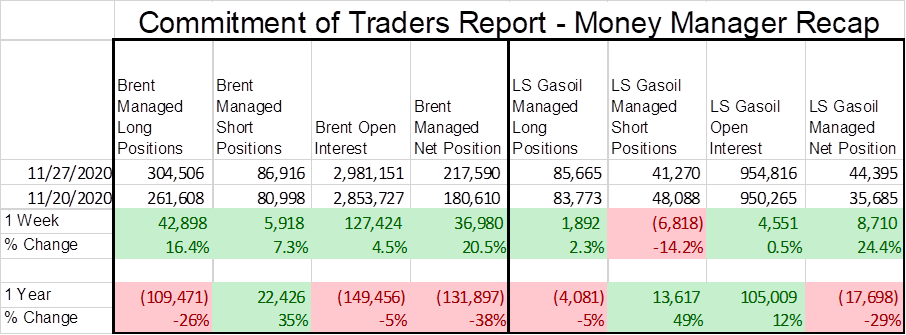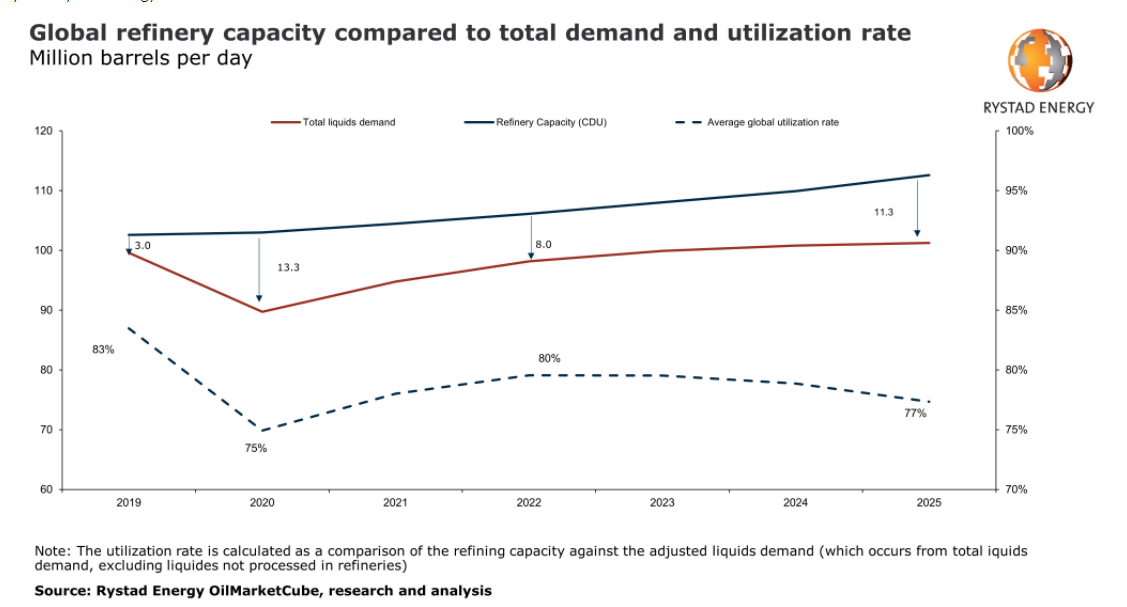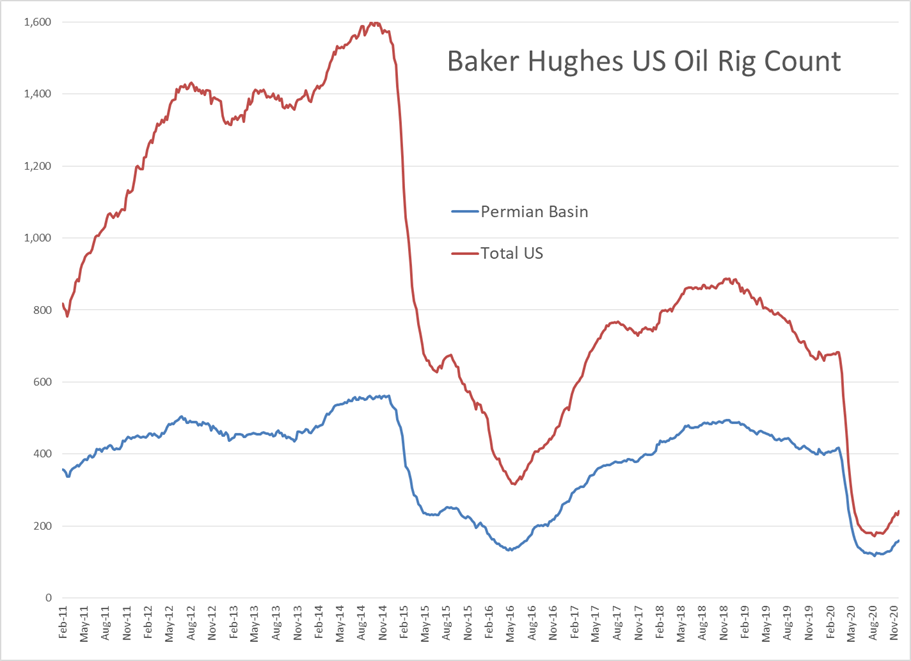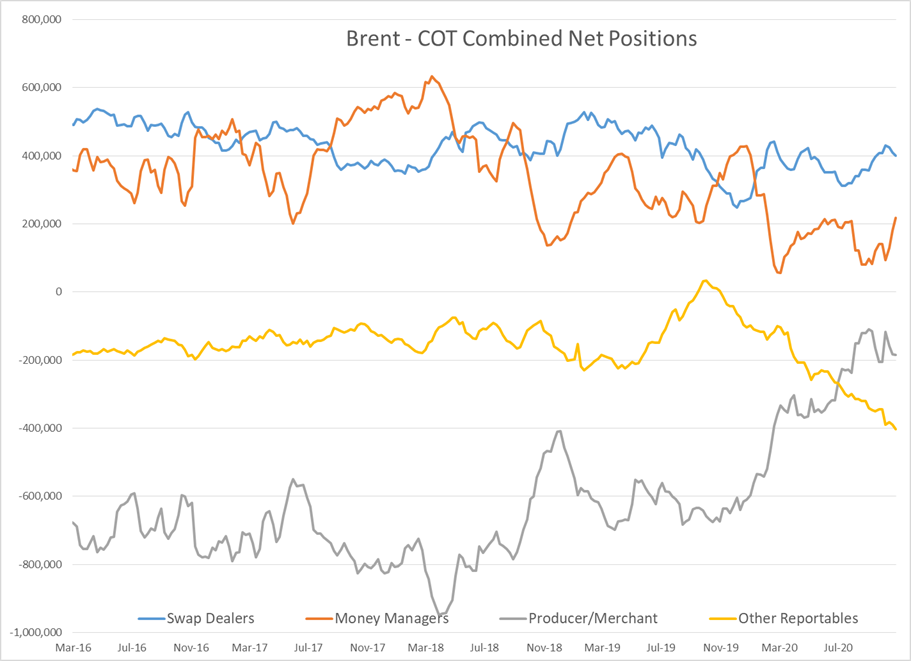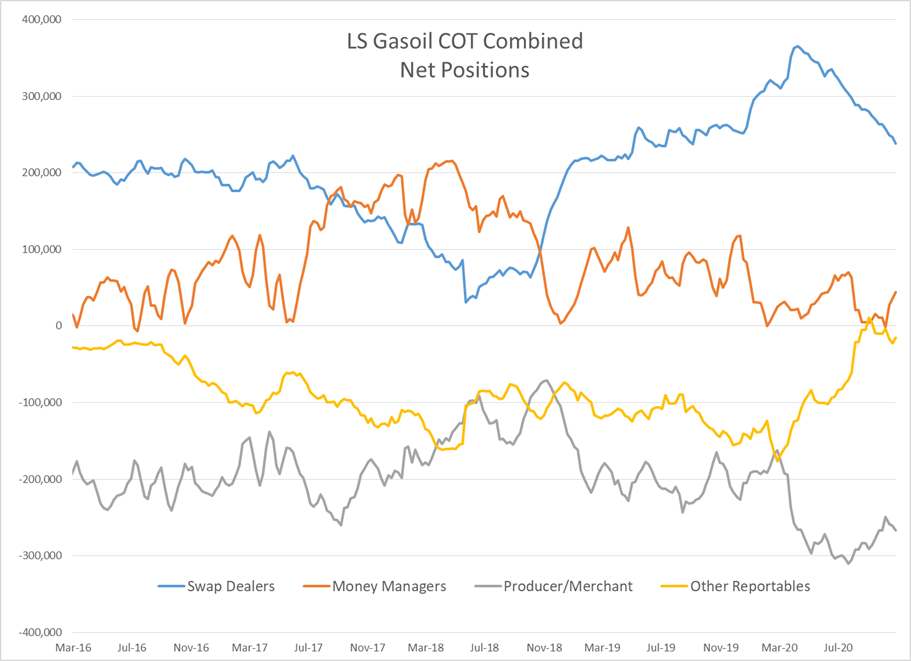Energy Futures Taking A Post-Holiday Breather

After rallying to 8 month highs ahead of Thanksgiving, energy futures are taking a post-holiday breather, with small losses this morning on top of minor drops seen in the combined trading session from Thursday and Friday. This type of pullback was overdue after the 30%+ November rally, with several short term technical indicators moving into over-sold territory last week. It’s too soon to call an end to the rally however as the upward trend lines are still intact, and we’ll need to see products drop by another nickel before this move will start looking like a reversal instead of just a short term correction.
It’s the last trading day for November product futures, and since spot markets weren’t assessed Thursday or Friday, there’s bound to be a little confusion as to the actual price changes expected at the racks this evening. For markets like the Gulf & West coasts hat have already rolled to trading against January futures, it’s looking like 1.5 cent combined drops in futures (roughly 1/2 cent from last week, a penny from this morning) while those still trading vs December futures like the NYH and Group 3 spot markets are on pace for slightly larger declines.
OPEC & Friends are officially meeting today to discuss output plans, after informal weekend meetings struggled to figure out a way to factor in rapidly rising Libyan output that’s offsetting a large portion of the current agreement to limit production.
S&P Global (FKA Mcgraw Hill) the parent company of Platts, is reported to be in advanced talks to acquire IHS Markit, the parent company of OPIS. You may recall a decade ago when Platts tried to acquire OPIS directly, and was met with a flurry of objection from the energy industry before the deal was canceled. No doubt we’ll see a similar backlash now to the combination of 2 of the 3 major pricing platforms in US petroleum spot markets (not to mention numerous other competing services across industries held by these two giant companies) but given the enormous size of the deal ($44 billion), it seems like only federal trade commission rulings will be enough to stop the transaction.
The latest refining casualty: Neste announced it would shutter its Nanntali Finland refinery in the first quarter of 2021 in an effort to save costs and focus operations on other facilities.
A new facility on the chopping block? The Suncor refinery in Denver, already beleaguered by numerous operational upsets on top of the weak margin environment, is now facing the risk of shutdown as state regulators consider not renewing its operating permits due to environmental concerns.
A Rystad Energy report suggests that despite the rash of refinery shutdowns announced this year – 28 so far – capacity additions will still outpace closures globally forcing utilization rates to stay at relatively low levels. A move to replace older, smaller facilities with larger, more efficient plants is driving the net increase in capacity that’s expected to change several emerging market countries from importers to exporters of refined products.
Baker Hughes reported 10 more oil rigs were put to work last week, bringing the total US oil rig count to its highest level in 6 months. The Permian basin account for half of the weekly increase, while the Eagle Ford shale added 3 more rigs on the week.
The CFTC’s commitment of traders report is delayed until later today due to the Thanksgiving holiday, but the ICE report suggests large speculators are jumping back on the energy bandwagon as prices rally. Money Managers made large additions in net length held Brent and Gasoil contracts for a 2nd straight week. The increase in Brent net length was driven by new longs entering the market (betting on higher prices) whereas the move in gasoil was primarily driven by previous shorts getting out of the way.
Click here to download a PDF of today’s TACenergy Market Talk.
Latest Posts
The Sell-Off Continues In Energy Markets, RBOB Gasoline Futures Are Now Down Nearly 13 Cents In The Past Two Days
Week 15 - US DOE Inventory Recap
Prices To Lease Space On Colonial’s Main Gasoline Line Continue To Rally This Week
Equity Markets Have Been Pulling Back Sharply In Recent Days As Inflation And Trade Concerns Inject A Sense Of Reality Into Stocks
Social Media
News & Views
View All
The Sell-Off Continues In Energy Markets, RBOB Gasoline Futures Are Now Down Nearly 13 Cents In The Past Two Days
The sell-off continues in energy markets. RBOB gasoline futures are now down nearly 13 cents in the past two days, and have fallen 16 cents from a week ago, leading to questions about whether or not we’ve seen the seasonal peak in gasoline prices. ULSD futures are also coming under heavy selling pressure, dropping 15 cents so far this week and are trading at their lowest level since January 3rd.
The drop on the weekly chart certainly takes away the upside momentum for gasoline that still favored a run at the $3 mark just a few days ago, but the longer term up-trend that helped propel a 90-cent increase since mid-December is still intact as long as prices stay above the $2.60 mark for the next week. If diesel prices break below $2.50 there’s a strong possibility that we see another 30 cent price drop in the next couple of weeks.
An unwind of long positions after Iran’s attack on Israel was swatted out of the sky without further escalation (so far anyway) and reports that Russia is resuming refinery runs, both seeming to be contributing factors to the sharp pullback in prices.
Along with the uncertainty about where the next attacks may or may not occur, and if they will have any meaningful impact on supply, come no shortage of rumors about potential SPR releases or how OPEC might respond to the crisis. The only thing that’s certain at this point, is that there’s much more spare capacity for both oil production and refining now than there was 2 years ago, which seems to be helping keep a lid on prices despite so much tension.
In addition, for those that remember the chaos in oil markets 50 years ago sparked by similar events in and around Israel, read this note from the NY Times on why things are different this time around.
The DOE’s weekly status report was largely ignored in the midst of the big sell-off Wednesday, with few noteworthy items in the report.
Diesel demand did see a strong recovery from last week’s throwaway figure that proves the vulnerability of the weekly estimates, particularly the week after a holiday, but that did nothing to slow the sell-off in ULSD futures.
Perhaps the biggest next of the week was that the agency made its seasonal changes to nameplate refining capacity as facilities emerged from their spring maintenance.
PADD 2 saw an increase of 36mb/day, and PADD 3 increased by 72mb/day, both of which set new records for regional capacity. PADD 5 meanwhile continued its slow-motion decline, losing another 30mb/day of capacity as California’s war of attrition against the industry continues. It’s worth noting that given the glacial pace of EIA reporting on the topic, we’re unlikely to see the impact of Rodeo’s conversion in the official numbers until next year.
Speaking of which, if you believe the PADD 5 diesel chart below that suggests the region is running out of the fuel, when in fact there’s an excess in most local markets, you haven’t been paying attention. Gasoline inventories on the West Coast however do appear consistent with reality as less refining output and a lack of resupply options both continue to create headaches for suppliers.

Week 15 - US DOE Inventory Recap

Prices To Lease Space On Colonial’s Main Gasoline Line Continue To Rally This Week
Energy markets are sliding lower again to start Wednesday’s trading as demand concerns and weaker stock markets around the world seem to be outweighing any supply concerns for the time being.
Rumors continue to swirl about an “imminent” response by Israel to Iran’s attacks, but so far, no news seems to be taken as good news in the hopes that further escalation can be avoided, even as tensions near the Red Sea and Strait of Hormuz continue to simmer.
Prices to lease space on Colonial’s main gasoline line continue to rally this week, trading north of 11 cents/gallon as Gulf Coast producers still struggle to find outlets for their production, despite a healthy export market. Gulf Coast CBOB is trading at discounts of around 34 cents to futures, while Gulf Coast RBOB is trading around a 16-cent discount, which gives shippers room to pay up for the linespace and still deliver into the East Coast markets at a profit.
Back to reality, or just the start of more volatility? California CARBOB basis values have dropped back to “only” 40 cent premiums to RBOB futures this week, as multiple flaring events at California refineries don’t appear to have impacted supply. The state has been an island for fuel supplies for many years as its boutique grades prevent imports from neighboring states, and now add the conversion of the P66 Rodeo refinery to renewable diesel production and the pending changes to try and cap refinery profits, and it’s easier to understand why these markets are increasingly vulnerable to supply shocks and price spikes on gasoline.
RIN prices continue to fall this week, touching 44 cents/RIN for D4 and D6 values Tuesday, their lowest level in 6 weeks and just about a nickel above a 4-year low. While the sharp drop in RIN and LCFS values has caused several biodiesel and Renewable Diesel producers to either shut down or limit production, the growth in RIN generation continues thanks to projects like the Rodeo refinery conversion, making the supply in RINs still outpace the demand set by the Renewable Fuel Standard by a wide margin.
The API reported draws in refined products, 2.5 million barrels for gasoline and 427,000 barrels for distillates, while crude oil stocks had an estimated build of more than 4 million barrels. The DOE’s weekly report is due out at its normal time this morning.
Click here to download a PDF of today's TACenergy Market Talk.
